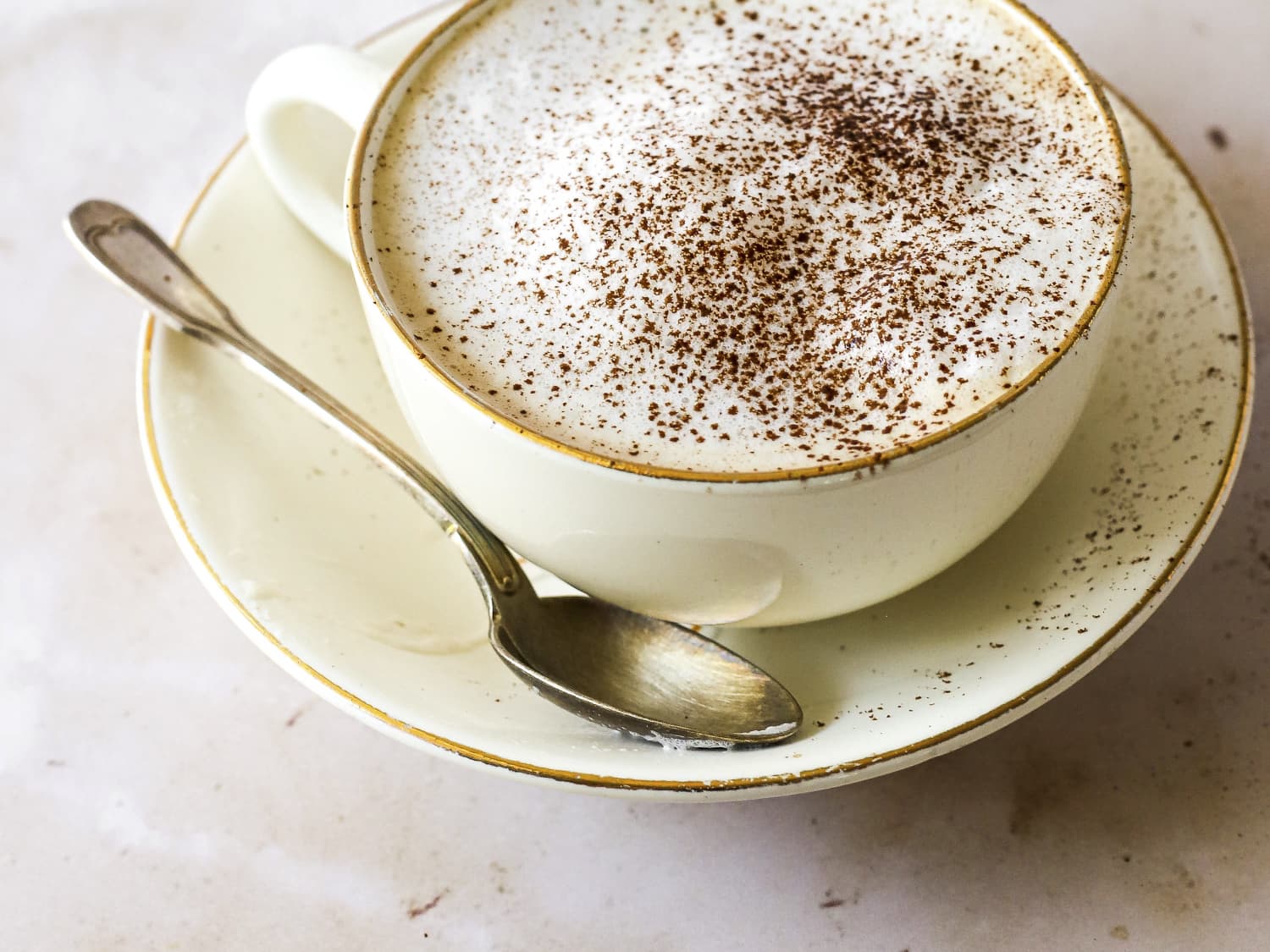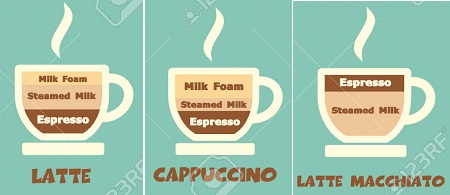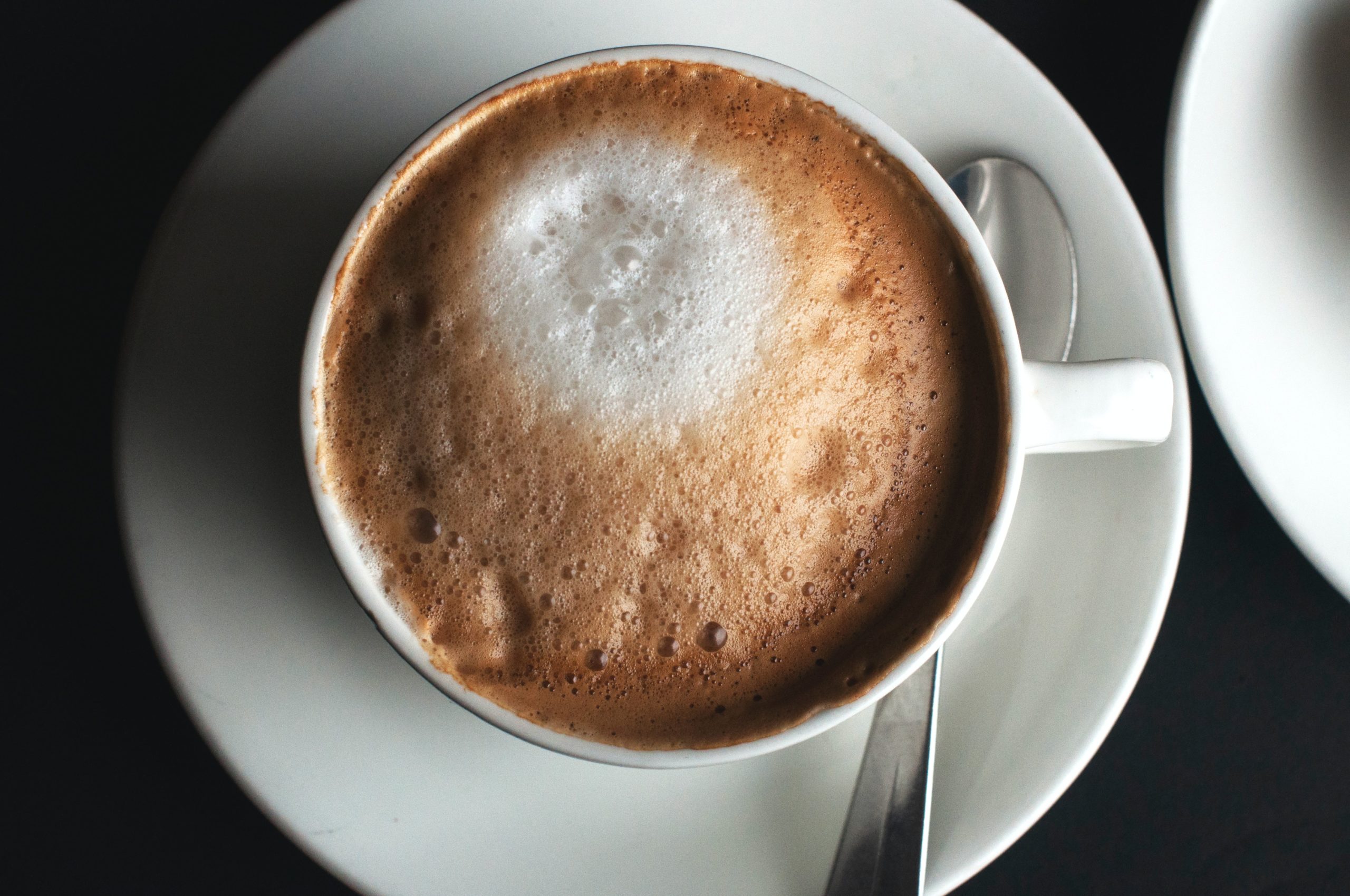The traditional cappuccino recipe calls for a delicate balance of espresso, steamed milk, and foamed milk in equal thirds. This 1:1:1 ratio is the hallmark of time-honored cappuccino preparation in cafes across Italy, allowing the sweet velvety steamed milk to perfectly temper the bold, intense espresso. However, many modern third-wave coffee shops are putting their creative spin on cappuccino-making by eliminating the signature milk foam layer.
These “wet” cappuccinos contain only microfoam-rich steamed milk combined with a ristretto or standard shot of espresso. While this streamlined preparation may be quicker, many coffee purists argue the lack of frothy foam on top throws off the ideal flavor equilibrium and takes the cappuccino too far from its traditional origins. So whether you prefer keeping to the classic 1:1:1 cappuccino recipe or enjoying new avant-garde versions, understanding the nuances of how the drink is composed can help you find your perfect cappuccino balance.
For true coffee aficionados, few beverages compare to the delight of a freshly brewed cappuccino. With its perfect balance of rich, bold espresso and lightly sweetened, silky steamed milk foam, the cappuccino showcases all the complex flavors that make this drink a cornerstone of cafe menus around the world. However, high-quality cappuccinos rely on specific techniques and equipment to achieve the ideal texture and taste.

This comprehensive cappuccino brewing guide will provide you with the insider knowledge and pro tips you need to easily recreate your favorite coffeehouse cappuccinos in the comfort of your kitchen. We’ll cover the origins and unique characteristics of cappuccinos, walk through foolproof preparation methods, recommend the best beans, milk, and gear, and troubleshoot any issues that arise as you hone your home barista abilities. So read on to master the art of crafting smooth, balanced, cafe-worthy cappuccinos.
A Brief History Behind the Cappuccino
To appreciate this complex coffee drink, it helps to understand its origins. The earliest versions of the cappuccino emerged in Europe in the 18th century. In Vienna, Austria, Capuchin monks served a coffee beverage topped with whipped cream and sugar that became known as the “Kapuziner.”
When a similar espresso and milk drink appeared in Italy in the early 1900s, it was named the “cappuccino” after the signature brown robes (“cappuccino” means “hood” in Italian) worn by the Austrian monks. The invention of the first espresso machines in Italy helped drive the cappuccino’s popularity across cafes in Milan, Venice, and beyond.
The traditional Italian cappuccino consists of equal thirds of espresso, steamed milk, and foamed milk served in a small 150-180ml cup. This 1:1:1 ratio remains the standard for balanced flavor. While sizes and preparations vary today, the cappuccino’s origins continue to influence specialty coffee shops globally.
Defining the Cappuccino
So what exactly constitutes a cappuccino? At its core, a traditional cappuccino contains:
- 1/3 espresso
- 1/3 steamed milk
- 1/3 foamed milk
These three ingredients combine to create a complex taste and texture:
- Espresso – Provides the base flavor and contributes the iconic rich brown hue. A single or double shot is used.
- Steamed milk – Steaming incorporates tiny air bubbles for a silky texture and sweetness to balance the espresso.
- Foamed milk – Forms the top frothy layer. Only milk with sufficient fat foams up properly.
While creative variations exist, maintaining an equal 1:1:1 espresso, steamed milk, and foam ratio is key for the ideal flavor balance. Too much milk dilutes the coffee, while too little makes it intensely bitter.
How Cappuccinos Compare to Lattes and Macchiatos
Cappuccinos are often confused with their espresso-based cousins, lattes and macchiatos. Here’s a quick rundown of how they differ:
- Cappuccino – 1:1:1 espresso, steamed milk, and foamed milk ratio. Approximately 150-180ml sized.
- Latte – More steamed milk, less foam, resulting in a milkier, creamier profile. Typically served in larger 240-360ml cups.
- Macchiato – Just a dollop of foamed milk atop a single espresso shot. Highlights the intense espresso flavor.
So in summary: cappuccinos strike a more equal balance between the espresso and milk components compared to the other drinks.
Tips for Pulling the Perfect Espresso Shots
Brewing high-quality espresso is vital for an authentic cappuccino with a balanced flavor. Here are some pro barista tips:
- Invest in a commercial-grade espresso machine – Expect to spend $500+ for decent home models.
- Always use freshly roasted coffee beans and grind right before brewing. A fine espresso grind is critical.
- Dose approximately 15-18 grams of coffee per shot for optimal extraction. Distribute evenly and tamp consistently.
- Time your shots to extract for 25-30 seconds – adjust the grind size to achieve this.
- Dial in the grind so shots pull 1-2 oz including the creamy crema layer on top. The flavor should be bold but not overwhelmingly bitter.
With the right equipment and some practice, you’ll be pulling espresso like a pro barista in no time.
Steaming Milk to Frothy Perfection
Steaming and frothing the milk is also crucial for creating that sensational cappuccino texture. Follow these tips:
- Always start with cold, fresh milk – whole milk works best, but 2% or non-dairy can be used.
- Choose a stainless steel steam pitcher – it evenly distributes heat for optimum steaming.
- Position the steam wand tip just below the surface until the milk volume doubles in size and makes slurping noises. This aerates the milk.
- Next, lower the tip further to heat and incorporate the foam. Spin the pitcher to blend thoroughly.
- Heat to 150-155°F to sufficiently foam without scalding the milk.
- Swirl the pitcher before pouring to reintegrate any separated foam.
It takes practice, but this process allows you to achieve silky, smoothed-out foam for your cappuccinos.
How to Pour Milk Like a Pro
Pouring the steamed milk requires finesse to assemble the perfect layered cappuccino. Here are some top tips:
- Hold the milk pitcher high above the espresso, around 4-6 inches. This creates a pleasing cascading effect.
- Pour slowly and steadily into the center of the cup. Let the milk gradually integrate into the espresso.
- Continuously lower the pitcher as the cup fills to “lay the milk on top” and produce that final frothy layer.
- Pour straight down without excess side-to-side motion for the best foam quality.
- Give the milk pitcher a swirl before pouring to re-mix any separated foam.
With some practice, you’ll be pouring rosettas and tulips worthy of a coffee shop window!
Choosing Quality Ingredients for Flavor and Froth
When it comes to ingredients, quality matters. Here’s how to source the best:
Coffee Beans
For exemplary espresso, seek out beans from specialty roasters whenever possible. Ask questions about the roast type and date. Medium roasts tend to have ideal complexity. Expect to pay around $12-$18 per 12 oz bag for premium single origin beans.
Milk
Whole milk is the gold standard – its higher fat content froths beautifully. For non-dairy, look for “barista style” oat or soy milk designed for steaming. Always opt for fresh, chilled milk.
Espresso Machine
Investing in a quality machine can seriously elevate your home cappuccino game. Plan on spending $450+ for decent semi-automatic models or $650+ for automatic versions. Top brands include Breville, Rancilio, and Nuova Simonelli.
While more expensive, using quality ingredients helps achieve authentic, cafe-caliber flavor in your cappuccinos. So splurge on specialty grade coffee and milk whenever you can.
Essential Equipment for Crafting Quality Cappuccinos
In addition to an espresso machine, having the right supporting tools is key. Here is a look at some essential gear for cappuccino success:
- Burr coffee grinder – Grinds beans to a fine, consistent texture needed for optimal espresso extraction. Expect to spend around $100+ for a quality home model.
- Steam pitcher – Stainless steel pitchers between 12-20 oz. evenly distribute heat for flawless milk steaming. Look for a pitcher with a pointed spout.
- Milk frother – If you don’t have a steam wand, a stand-alone frothing pitcher makes whipping up foam easy.
- Tamper – These tools pack the coffee evenly into the filter basket prior to brewing to help extract balanced, intense espresso.
- Thermometer – Takes the guesswork out of heating the milk to the ideal temp.
Having the right tools makes the entire cappuccino creation process much smoother. So invest in quality equipment for best results.
Step-By-Step Instructions for Crafting the Perfect Home Cappuccino
Ready to get crafting? Follow these steps for barista-level cappuccinos:
Brew espresso – Finely grind fresh beans. Dose 15-18g of grounds into filter basket then tamp evenly. Pull single or double shot into your warmed cup.
Steam and froth milk – In a steam pitcher, aerate milk by positioning wand tip just below the surface until volume expands. Lower further to heat and incorporate foam to 150-155°F.
Assemble drink – Holding pitcher high, slowly pour steamed milk into espresso. Lower pitcher as cup fills to create layered effect. Top with final layer of foam.
Customize (optional) – Add chocolate shavings, cinnamon, or cocoa powder for extra flair. Serve with biscotti on the side.
It takes practice to master each step, but with quality ingredients and the right techniques, you can achieve cappuccinos on par with the top cafes right at home.
Friendly Asked Question:
When attempting cappuccino-making for the first time, questions may arise. Here are answers to some frequently asked FAQs:
What is the standard cappuccino size?
Traditionally 6 oz or 180ml. Though some modern coffee shops serve larger versions.
Can you use 2% or nonfat milk?
Yes, but whole milk froths better. Non-dairy milks like oat and soy also work well.
Is a “dry” cappuccino (more foam) better?
Not necessarily – dry means less milk. The traditional 1:1:1 ratio is ideal for balanced espresso and milk flavor.
Can you make cappuccinos iced?
Yes, but icing significantly alters the intended flavor profile. Cappuccinos are best enjoyed freshly made and hot.
Don’t be afraid to experiment with different milk types and ratios to find your ideal cappuccino style. The Italian classic can handle some creative reinterpretation!
Occasions and Ways to Enjoy Cappuccinos
One of the great aspects of cappuccinos is their versatility as a coffee drink. Here are some fun ways to enjoy them:
- Weekend mornings – Savor a leisurely cappuccino when you have time to appreciate all the complex flavors.
- After dinner – A cappuccino is the perfect post-dinner palate cleanser and digestif.
- Date night dessert – Impress your date with your impressive at-home barista skills.
- Holiday gatherings – Make customized cappuccinos for all your guests like a true Italian host.
- Gifts – Surprise fellow coffee lovers with high-end beans, a milk frother, or coffee shop gift cards.
Any time you want to feel like you’re sipping a cappuccino in a quaint cafe in Rome or Milan, this drink delivers. It’s a taste of la dolce vita in your own kitchen!
In summary, this guide covers all the key information needed to make incredible cappuccinos at home:
- The history behind the drink and what defines a traditional cappuccino
- How cappuccinos compare to other espresso-milk drinks like lattes and macchiatos
- Tips for pulling rich, balanced espresso shots
- Steaming and frothing milk to silky perfection
- Recommendations for high-quality beans, milk, and equipment
- Step-by-step instructions for assembling the perfect layered beverage
- Troubleshooting FAQs for beginner home baristas
- Fun ways to enjoy cappuccinos for any occasion
So whether you’re an amateur barista looking to level up your skills or just love the nostalgia of a well-crafted cappuccino, use this guide to help unlock the secrets of cafe-caliber flavor. All that’s left to do is grind those beans, steam that milk, and sip your way to coffee bliss!







